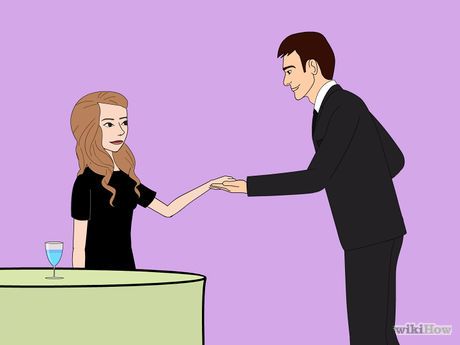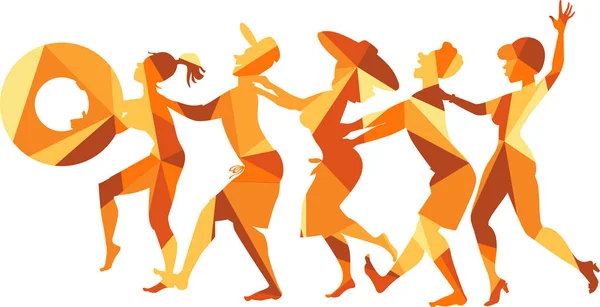How to dance jamaican style
DANCEHALL-lecture noted - Tabanka Dance Ensemble
Dancehall is named after Jamaican dance halls in which popular Jamaican recordings were played by local sound systems. These began in the late 1940s among people from the inner city of Kingston such as Trench Town, Rose Town and Denham Town—Jamaicans who were not able to participate in dances uptown. Yes this means that Dancehall is definetly pre-HipHop.
POLITICAL REASON FOR LYRIC CHANGE
Social and political changes in late-1970s Jamaica, including the change from the socialist government of Michael Manley (Peoples Nationalist Party) to Edward Seaga (Jamaican Labour Party), were reflected in the shift away from the more internationally oriented ROOTS REGGAE towards a style geared more towards local consumption, and in tune with the music that Jamaicans had experienced when sound systems performed live. Themes of social injustice, repatriation and the RASTAFARI MOVEMENT were overtaken by lyrics about dancing, violence and sexuality.
Toasting
Was the style of “talking” or rapping especially on the breaks of the songs, or in between the songs done by the DJ. The technique for “rap” or rhythmical talking used in Reggae and Dancehall is called toasting. Busta Rhymes is an example of a Rap artist that still very much uses this technique.
DJ or Toasters becoming the stars
Between 1970 and 1981 “Deejay” records became, for the first time, more important than records featuring singers. Another trend was sound clash albums, featuring rival deejays /or sound systems competing head-to-head for the appreciation of a live audience, with underground sound clash cassettes often documenting the violence that came with such rivalries.
Pioneers for the new artist; female and male raping superstars
Two of the biggest deejay stars of the early dancehall era, Yellowman and Eek-a-Mouse, chose humor rather than violence.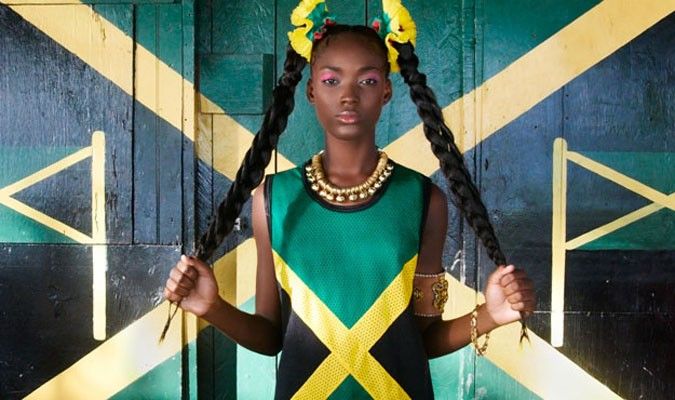 Yellowman became the first Jamaican deejay to be signed to a major American record label, and for a time enjoyed a level of popularity in Jamaica to rival Bob Marley‘s peak. The early 1980s also saw the emergence of female deejays in dancehall music, including: Sister Charmaine, Lady G, Lady Junie, Junie Ranks, Lady Saw, Sister Nancy, Patra and Shelly Thunder.
Yellowman became the first Jamaican deejay to be signed to a major American record label, and for a time enjoyed a level of popularity in Jamaica to rival Bob Marley‘s peak. The early 1980s also saw the emergence of female deejays in dancehall music, including: Sister Charmaine, Lady G, Lady Junie, Junie Ranks, Lady Saw, Sister Nancy, Patra and Shelly Thunder.
Yellowman is still the blueprint for performance that the Dancehall stars use, and for how popular “party” rappers like Nelly emulate. Lady G, Sister Nancy Lady Saw, and Patra pawed the way for female rappers and rap stars. Patra being the first to appear internationally and opening the door with “wukaman”, “queen of the pack” and other international hits. “pull up to my bumper” and her style became the hottest trend. She introduced the butterfly and lots of moves internationally, as well as she became the blueprint for the female artist, feminine, independent, “tomboyish” yet sexy and in control of her own sexuality. “What a man/Shoop” etc is very much in this spirit.
“What a man/Shoop” etc is very much in this spirit.
Trivia: Janet Jackson to many is the one who introduced the “box braid” style on hair and the jeans overall. This in itself was a tribute to and emulation of Patras signature style.
RIDDIMS
The digital recording or producing of rhythms was the next trend, that came with the digitalization of the genre. The first big hit was the “Sleng Teng” riddim.
The “Sleng Teng” rhythm was used in over 200 subsequent recordings. This deejay-led, largely synthesized chanting with musical accompaniment departed from traditional conceptions of Jamaican popular musical entertainment.
Dancehall is a popular dance genre springing out of English speaking Caribbean, and spearheaded from Jamaica. It is the mix and coming together of African retention dances of the region and Jamaica in particular, with popular culture, and youthful “innovation”. Dancehall has in the later years been used to package and sell Jamaican and Caribbean culture.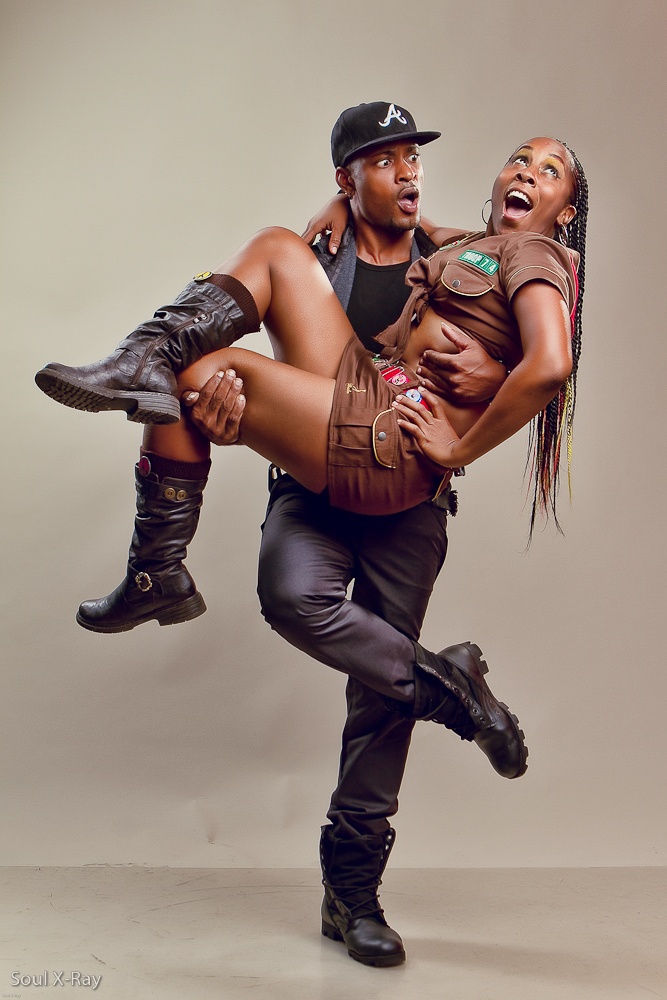 It has for that purpose been restructured in order to sell more on the international market. Dancehall is one of the larges industries in Jamaica.
It has for that purpose been restructured in order to sell more on the international market. Dancehall is one of the larges industries in Jamaica.
Dancehall has informed several other Dancestyles, predates Hip Hop culture, and has enjoyed several rounds of mainstreaming and crossover since the 1960s. The movements that inform Dancehall come predominantly from Jamaican traditional dance retentions. Reggae however is in itself also a fusion of these styles although not allowing for the same rhythmical diversity as Dancehall has. Dancehall springing out of Reggae and still being considered as a reggae sub-genre always adhers to the Reggae “feel” or “pulse”. This predominantly drawing from Kumina, nyabinghi (Rastafari), and Maroon roots. The 16 rhythmic genres of dance that Dancehall predominantly draws upon are the following:
- Maroon (African/Koromanti)
- *Myal (healing dance/related to yanvalou)
- *Kumina (African)
- Revival (African/Gospel)
- Rastafari (african)
- *Junkanoo (african)
- Hosay (muslim…Hussein)
- *Bruckings (African)
- *Burru (African)
- *Dinki Mini (African)
- *Ettu (African)
- *Gerreh (African)
- *Gumbay (African)
- *Quadrille (European/African)
- *Tambu (African)
- *Zella (African)
The majority of these are considered to be religious dances, and have evolved considerably over the years.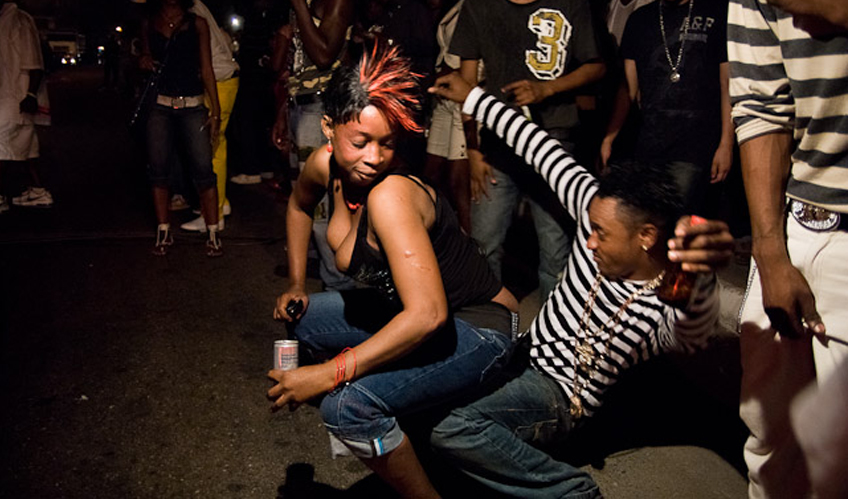 One of the few to not be associated with faith, the Junkanoo dances, still exist today in their original style. As well as the characters of the Junkanoo is very much what has informed the different styles of Dancehall.
One of the few to not be associated with faith, the Junkanoo dances, still exist today in their original style. As well as the characters of the Junkanoo is very much what has informed the different styles of Dancehall.
*Note on dance creation: Each of these styles are genres and have many variations, characters etc. It is a huge dictionary of vocabulary to choose from, ranging from highly symbolic, social, and or daily activity things. Rhythms from these styles are widely sampled in the Dancehall Rhythms and which moves go with the rhythms are usually dictated by which genres it is sampling. Below follows a short description of each dance. Notice how we have included which area of Jamaica it is from. Usually dancers will draw from dances with a strong connection to their area, as well will producers and Djs. Gully vs Gaza and other fractions also have a clear distinction in sources of inspiration and or retentions, and this is how dancehall identity and culture has been built, cross promoting these dividers.
BRUCKINS
Bruckins, as a member of the creolised group of traditional dances, reveals a unique mixture of African and European influences. The Bruckins party is a stately, dipping-gliding dance typified by the “thrust and recovery” action of the hip and leg. It was performed in the past mainly to celebrate the anniversary of Emancipation from slavery on the 1st of August, 1838.
BURRU
This particular form of dance is a fertility masquerade found in Lionel Town and Hayes (Clarendon). It has familiar features to the Jonkunnu. The dance shows strong fertility elements as evidenced in the deliberate rotating action of the hip while bending through the knees accompanied by breaks of intermittent small jumps.
DINKI-MINI
Dinki Mini is done on the Eastern end of the island in the parish of St. Mary. It is usually performed after the death of a person until the ninth night. These ‘Nine-Night’ sessions are lively and are held usually to cheer up the bereaved.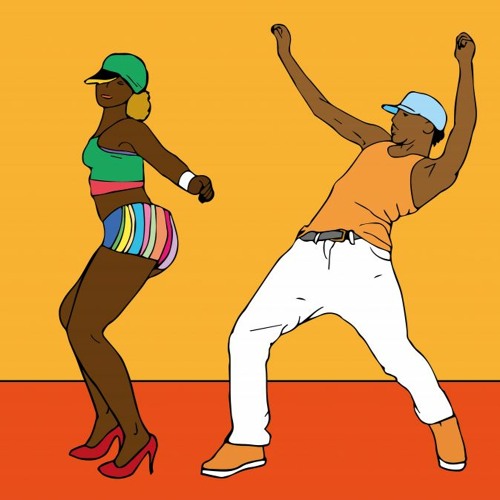 During the performance the male dancer bends one leg at the knee and makes high leaps on the other foot. Both male and females dance together with very suggestive pelvic movements. An integral aspect of this dance is the use of the instrument called a benta.
During the performance the male dancer bends one leg at the knee and makes high leaps on the other foot. Both male and females dance together with very suggestive pelvic movements. An integral aspect of this dance is the use of the instrument called a benta.
ETTU
The Ettu dance is performed in the parish of Hanover and is a social dance from Africa. It is believed that Ettu is a corruption of the word Edo, the name of a West African Yoruba Tribe. The dance involves the lifting, and dropping of elbows and shoulders, with the feet doing sideways shuffling step. The songs are short and repetitive, built on four notes only and sung in a Yoruban dialect.
GERREH
The Gerreh is a dance of African origin that is performed the night after the death of a person. The dance is very lively and celebratory in nature and geared to cheering the bereaved. It is similar to the Dinki Mini and Zella with more emphasis being placed on the hip movements executed mainly by the female dancers. The instruments used in Gerreh are similar to those used in Dinki Mini with pot covers taking the place of the benta.
The instruments used in Gerreh are similar to those used in Dinki Mini with pot covers taking the place of the benta.
GUMBAY
The Gumbay dance, an element of the healing cult of the same name, was also performed in the parish of St. Elizabeth and is derived from Myal. The dance consists of a series of long steps followed by vibrating sideways body movements and by wheeling turns and sudden stops with pelvic forward tilt. During possession various feats such as back bending, rolling over in somersaults and climbing high coconut trees could be observed. This dance is well known among members of the Maroon population.
*JONKONNU
A strong dance and musical tradition in Jamaica, Jonkonnu has been preserved the most accurately through the years, recognized as the oldest dance style on the island. A fusion of African mime and European folk theater, Jonkonnu always tells a story, and is often cast like a play with each dancer receiving a specific character to portray.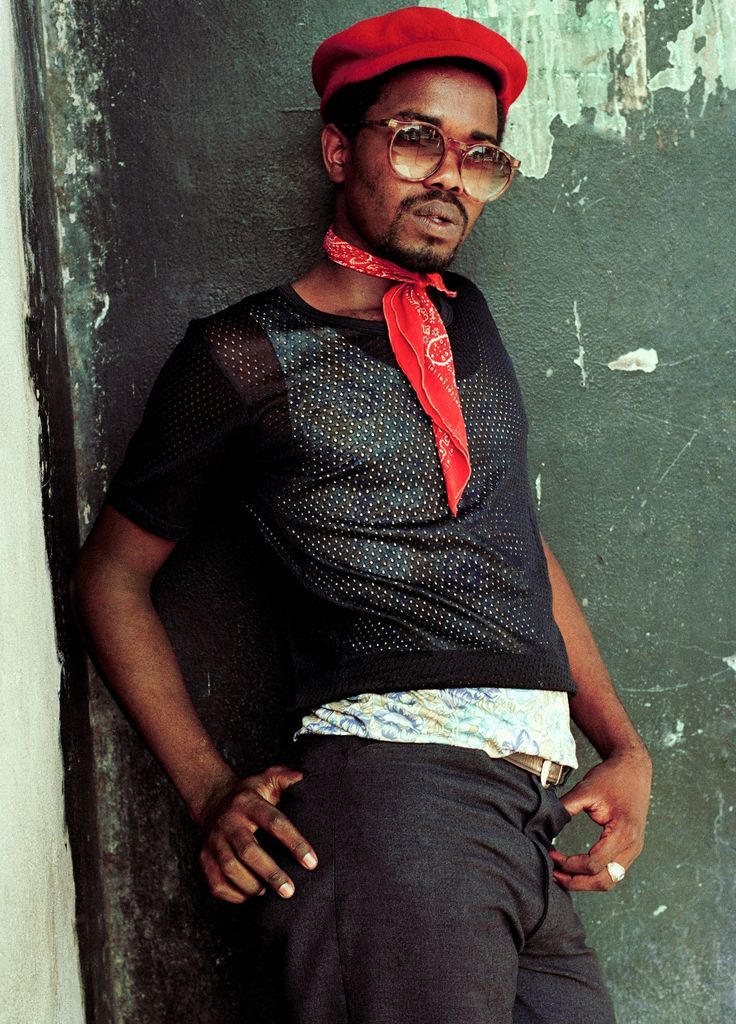 Much of the humor and play, very much used by for example “Les Twins”, involving theatrics, dancers forming together to make bikes, horses and saddle etc etc comes from this form.
Much of the humor and play, very much used by for example “Les Twins”, involving theatrics, dancers forming together to make bikes, horses and saddle etc etc comes from this form.
Traditionally-assigned characters, each with their own choreography, include:
- Pitchy Patchy – a lively character with small and rapid steps. He also moves in circular patterns that take up much of the dance space, and includes basic acrobatics like cartwheels into his movements.
- Devil – though the title sounds ominous, Devil is actually charming and entertaining, with an alternation of small and bouncy steps with long and fluid ones. Combined with turns and jabs with a pitchfork, this character is noted in many Jonkonnu
- Cow Head – low to the ground and sticking to bucking movements, this dancer moves much like an actual cow head.
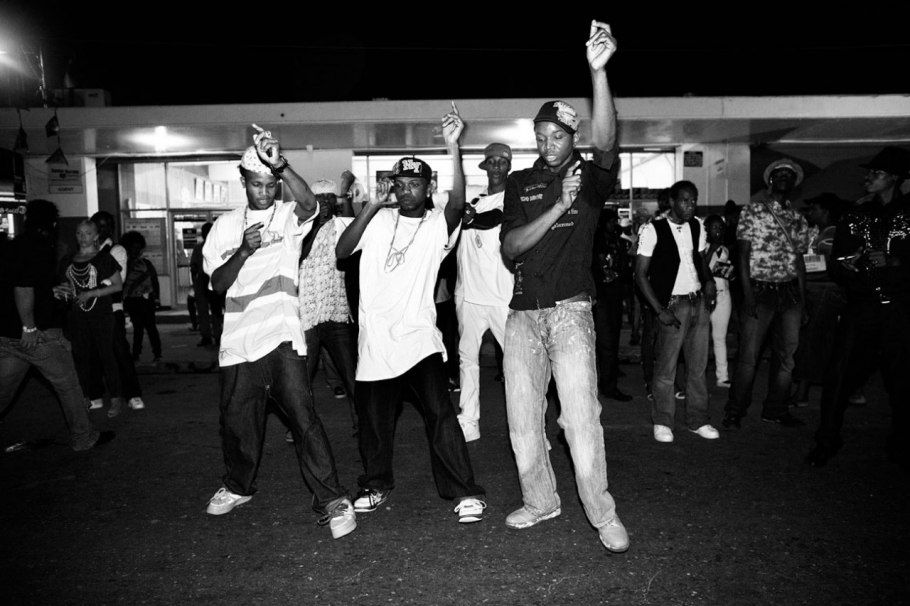
- Belly Woman – performs belly movements in sync with the rhythmic beats of the music
- Set Girls – costumed groups of female dancers who fill out what can be considered the ensemble or chorus line of Jonkonnu
KUMINA
Kumina is a religious group, which originated in Congo, West Africa, and was brought to Jamaica by the free Africans who arrived between the 1840s and 1860s. According to Dr. Olive Lewin in her book “Rock it Come Over”, Kumina expresses the strongest African retention of Jamaican folk culture, and provides powerful clues about the religious and social customs of the African ancestry. It is generally performed in the parish of St. Thomas to celebrate special events such as engagements and weddings. The three most important elements in a Kumina session are dancing, singing and drumming. The drums are believed to be the most important because of the control they have over the spirits.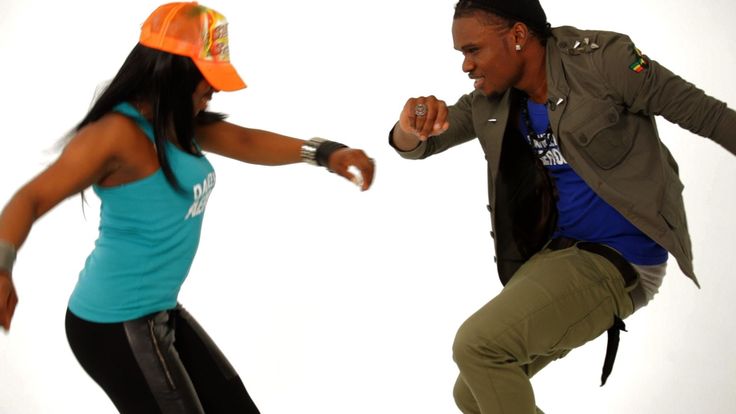
MYAL
Myal is one of the oldest dances in Jamaica and is associated with a type of religious observance. It was mostly performed in the parish of St. Elizabeth and has been erroneously associated with Obeah. The dance shows a wide range of body movements, extensive use of space and violence of action. These are done by throwing the body on the ground and by acrobatic feats, as well as a vibrating movement brought about by a succession of rapid sideway shifts from foot to foot, on the toes and with knees bent.
QUADRILLE
Quadrille is a coupled (male and female) dance in Jamaica which was danced during slavery. There are three styles – the Ballroom Style, the Camp Style and the Contra Style. The Ballroom Style (or Square) of Quadrille originated from the popular dance of the French and English in the 18th and 19th centuries and highlighted the elegance and mannerisms of the elite of these societies. While the Camp style of Quadrille also known as long way set formation includes African elements and is known as the Afro-Jamaican version of the Ballroom Quadrille.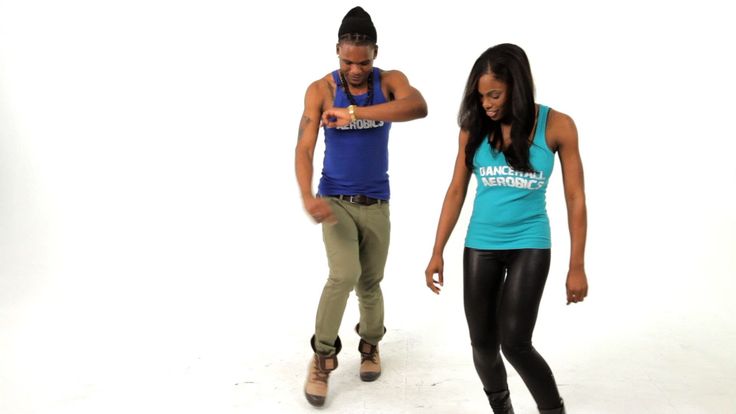 The Contra Style Quadrille is performed only to Mento music from beginning to end.
The Contra Style Quadrille is performed only to Mento music from beginning to end.
TAMBU
The tambu dance takes its name from the drum referred to as “tambu” and is performed mainly for entertainment with couples facing and moving towards each other using the Shay-shay, Saleone and Mabumba sequence. The shay-shay features rotating action of the hips, shuffling along with one foot on the ball.
ZELLA
This folk dance form is rarely heard of but is similar in form and structure to the Dinki Mini as it forms part of the death observances and rituals in Portland. The difference is in the main instruments which is a pair of Kumina drums.
Dancehall - HIP HOP CULTURE
Dancehall
|
how the rebirth of the classical dancehall took place
Relatively recently, just a few years ago, a dance with Jamaican roots came to Moscow. Previously, soft, deceptively relaxed dancehall movements hid a strict rhythm, a well-developed dynamics. But everything in this world evolves. Those who like to relieve stress on the dance floors were not satisfied with the calm Jamaican reggae. Therefore, DJs switched from him to recitative, hip-hop, jazz. Expressive, plastic and feminine movements have added fire, which now includes shaking, undulating swaying of the hips and chest.
Dancehall has two directions - male and female. An hour-long lesson in intensity is not inferior to the loads when doing fitness. Movements for ladies are focused on the maximum involvement of the lower body. Modernized pas load legs, buttocks, abs, arms.
Dancehall training is simple at first: squats and lunges are done with half-bent knees.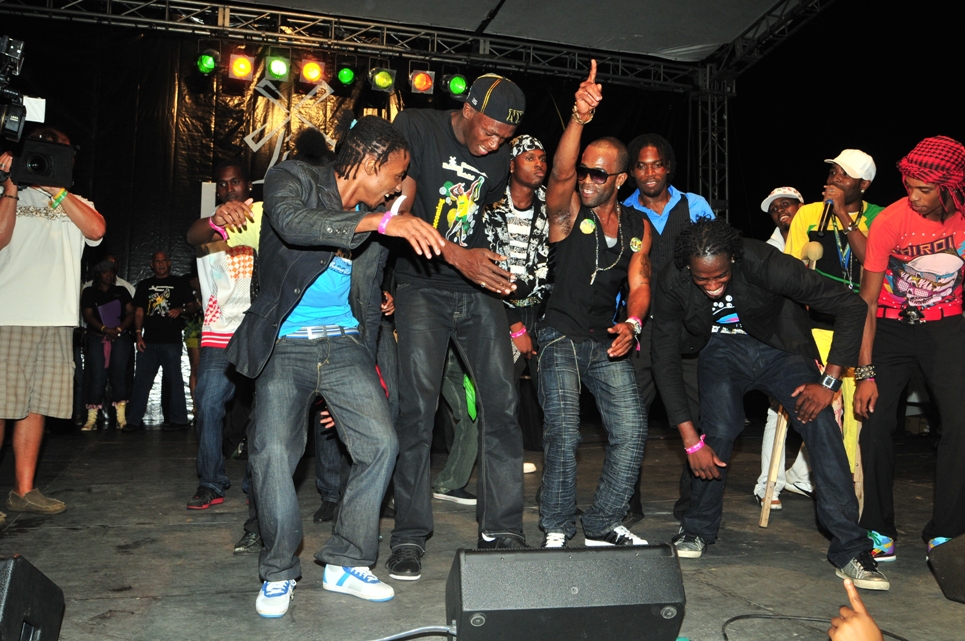 In the process of improvement, the amplitude gradually increases. Rigid, energetic men's steps differ sharply from emphatically sexy, seductive women's. In general, dancehall can be called a dance of contrasts: emotionality and aggressiveness are interspersed with bright sensuality.
In the process of improvement, the amplitude gradually increases. Rigid, energetic men's steps differ sharply from emphatically sexy, seductive women's. In general, dancehall can be called a dance of contrasts: emotionality and aggressiveness are interspersed with bright sensuality.
Dancehall Promotion Troika
Dancer Amari Marshall believes that dance training should be progressive. Before staging a dancehall, students should liberate their bodies, take an advanced hip-hop course. The physical, spiritual resonance, the sultry expansion of the dance seemed to capture the sun-drenched streets of Jamaica - the birthplace of mixed rhythms. A beginner who is not prepared for them may not be able to cope.
The film "King of the Dancehall", dedicated to Jamaican dance, is known on the Internet. Nick Cannon, who believes that the dancehall philosophy is about freedom, imperceptibility of pain in cases where the music scourges you, became the lead actor. Filming took place in Jamaica, in one of the scenes the genre of electronic music was used.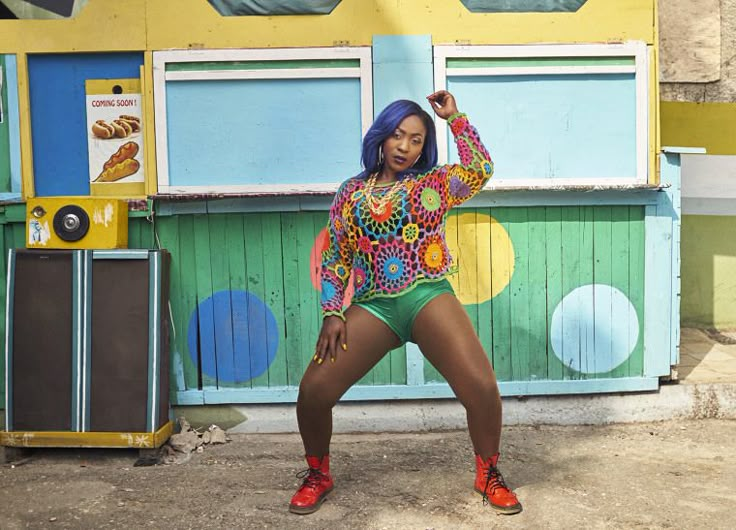
Lehr Courteillemont was so inspired by Jamaican rhythms that she created her own dance style Ragga Jam based on them, a kind of African-Jamaican mixture of fitness and dance. Now this species has stepped over the sexual boundary: both men and women are fond of it. The vulgarity is gone, the charm and tenderness remain. But the bright Frenchwoman believes that the primitiveness of the dance is the main thing. It is in her that she draws relaxation and money, giving lessons around the world.
The intensity of life is growing, people need more and more psycho-emotional and physical relaxation. If they find the first in the sacraments of confession, repentance, communion, then the second - on the dance floors. Paul Bragg also proved that movement is one of the best means of creating a healthy nervous system. Why not choose a dancehall dance for this?
Sign up for a free class
Just fill in these fields
and we will contact you
Hip-Hop DancingDanceHallTwerk | Booty DanceTwerk | TwerkGo-Go | Go-GoBreakdancePoppingJazz FunkStretchingHouse DanceBody WorkHigh HeelsBody MadeContemporaryContemporary DanceStreet DanceRhythmDanceHall KidsStreet DancingBooty Dance | Booty DanceContemporary ChoreographyKrump | KrumpLady's StyleWaacking & VogueRagga | RaggaClub DancingBaby DancingWedding DanceExperimentalIndividualVIP GroupsHip Hop ChoreoBallet / ChoreographyBooty Dance | Booty Dance Jazz Modern Street Dance Kids Street Dance Kids Pro0003
Dance Directions
- Hip Hop Dancing
- Hip Hop Dancing
- DanceHall
- DanceHall
- Twerk | Booty Dance
All Directions
Incendiary dance from Jamaica: all about Dance Hall
10/27/2021
Dancehall is a Caribbean street dance that is growing in popularity every year.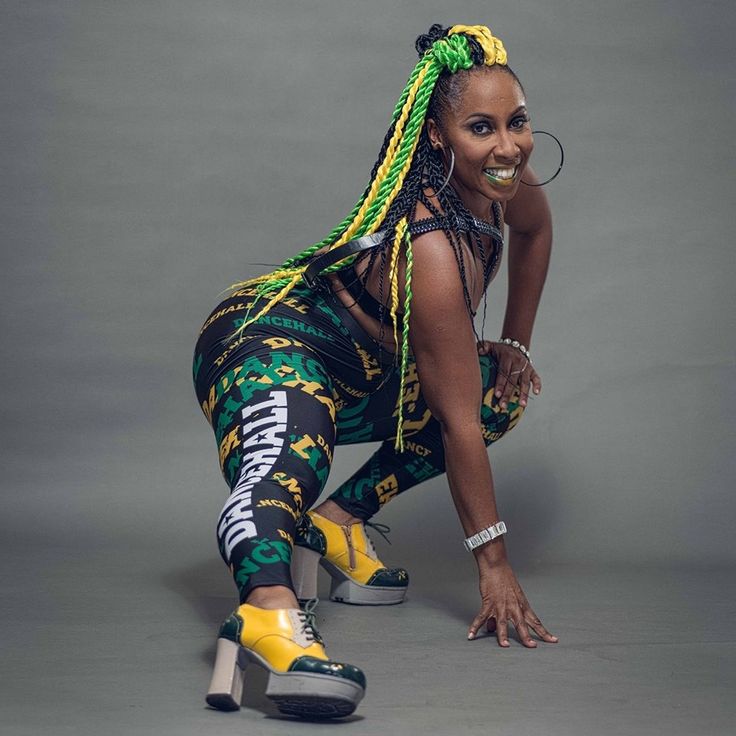 Despite the fact that he appeared in Russia relatively recently, he has enough fans who have appreciated the emotional and expressive choreography that has absorbed the culture of Jamaica.
Despite the fact that he appeared in Russia relatively recently, he has enough fans who have appreciated the emotional and expressive choreography that has absorbed the culture of Jamaica.
Dancehall: a history of dance
Jamaica is considered to be the birthplace of Dancehall. It was in its capital, Kingston, that the direction was born in the 80s, which absorbed the rhythm of the incendiary reggae, the founder of which was the famous musician, vocalist and performer Bob Marley.
It is generally accepted that social inequality played an important role in the emergence of dance. At that time, both poor immigrants from Africa and more prosperous emigrants from Europe lived in Jamaica. And for the African people, the dancehall has become a symbol of unity in a foreign territory, an opportunity to exchange emotions and impressions.
Structure and elements of dance
Sometimes dancehall is mistakenly called reggae, not suspecting that this is a completely different dance.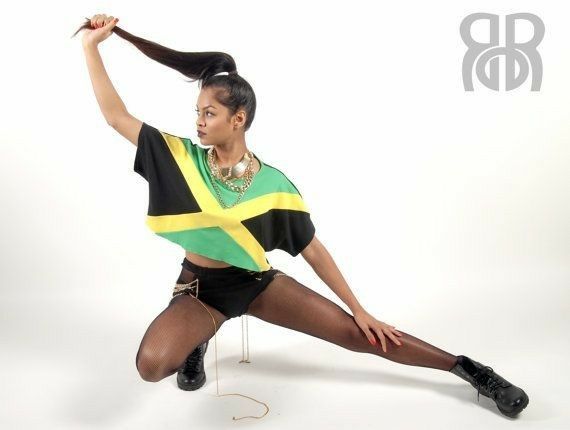 It is more rhythmic and dynamic, and attitude is of great importance - its character and presentation.
It is more rhythmic and dynamic, and attitude is of great importance - its character and presentation.
The basis of the style is basic steps with body movements, which are complemented by smooth movements and sharp beats. In most cases, staging is an improvisation on a specific composition or track.
Features of the dance
The dancehall style is not just a choreography of connections and elements united by one concept and idea. This is an opportunity to demonstrate your freedom by moving to the beat of the music.
To master this direction, it is not enough to be a good dancer, feel the rhythm and be able to improvise. Only by being liberated on the dance floor you can show a real dancehall - a unique dance style of freedom-loving and open-minded people.
What is the best way to dance
Any comfortable clothes and shoes are suitable for dancehall. There are no strict restrictions, imposed stereotypes and prohibitions. But when it comes to a concert performance, dancers usually use to create an image:
- wide tops;
- bright shorts;
- t-shirts;
- tight leggings or pants;
- loose fit shirts;
- T-shirts
- headwear and flashy accessories.
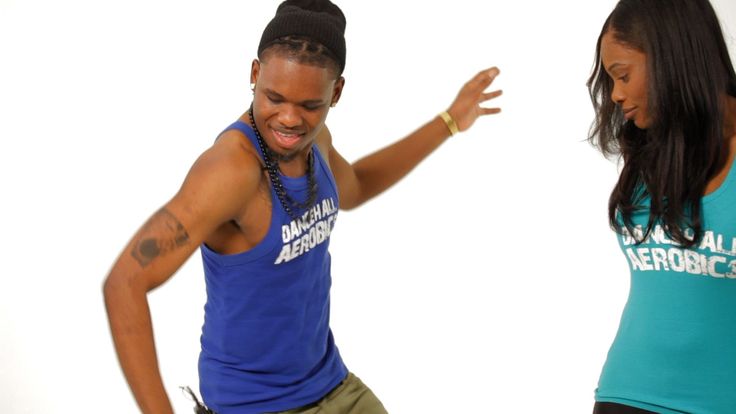
For group dance classes and performances, a single color scheme is selected and a common concept of images is thought out for each participant.
Who should try
Dancehall can be played by both girls and boys of any build, regardless of the level of physical fitness. A prerequisite is the absence of medical contraindications, which is an invariable requirement for sports.
The direction of Dancehall is ideal if you need:
- learn how to move beautifully to the music;
- increase daily calorie consumption, which is important for a sedentary lifestyle;
- get positive emotions and a charge of motivation;
- increase muscle tone.
If you want to get acquainted with this direction, try dancehall dancing and understand what it is, you should sign up for the Premier Sport club.
We are located at: st. Olof Palme, 5 (SWAD of Moscow, near the metro station Minskaya, Lomonosovsky Prospekt, University, Sportivnaya, Victory Park).
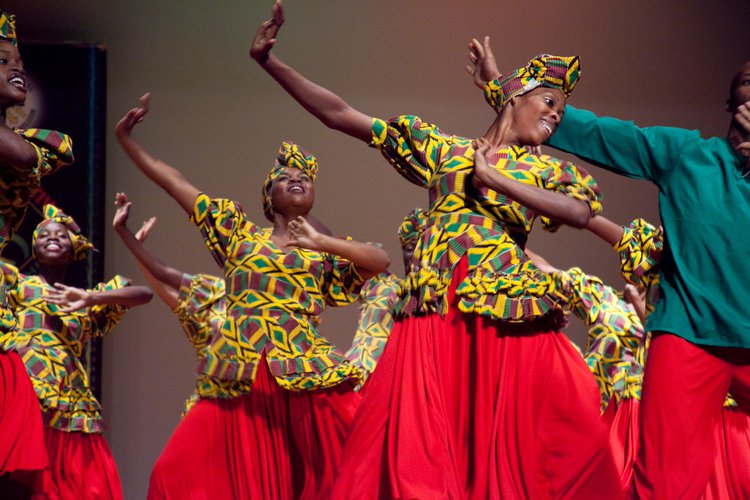 Initially dancehall was a more sparse version of reggae than the roots style, which had dominated much of the 1970s.Two of the biggest stars of the early dancehall era were Yellowman and Eek-a-Mouse. Dancehall brought a new generation of producers, including Linval Thompson, Gussie Clarke and Jah Thomas.In the mid-1980s, digital instrumentation became more prevalent, changing the sound considerably, with digital dancehall (or "ragga") becoming increasingly characterized by faster rhythms. (The word "bashment", a term originating in the 1990s, was used to describe a particularly good dance; for example "to go to a bashment dance". In the Dancehall vernacular, "bashment" is therefore an adjective instead of a noun.)
Initially dancehall was a more sparse version of reggae than the roots style, which had dominated much of the 1970s.Two of the biggest stars of the early dancehall era were Yellowman and Eek-a-Mouse. Dancehall brought a new generation of producers, including Linval Thompson, Gussie Clarke and Jah Thomas.In the mid-1980s, digital instrumentation became more prevalent, changing the sound considerably, with digital dancehall (or "ragga") becoming increasingly characterized by faster rhythms. (The word "bashment", a term originating in the 1990s, was used to describe a particularly good dance; for example "to go to a bashment dance". In the Dancehall vernacular, "bashment" is therefore an adjective instead of a noun.)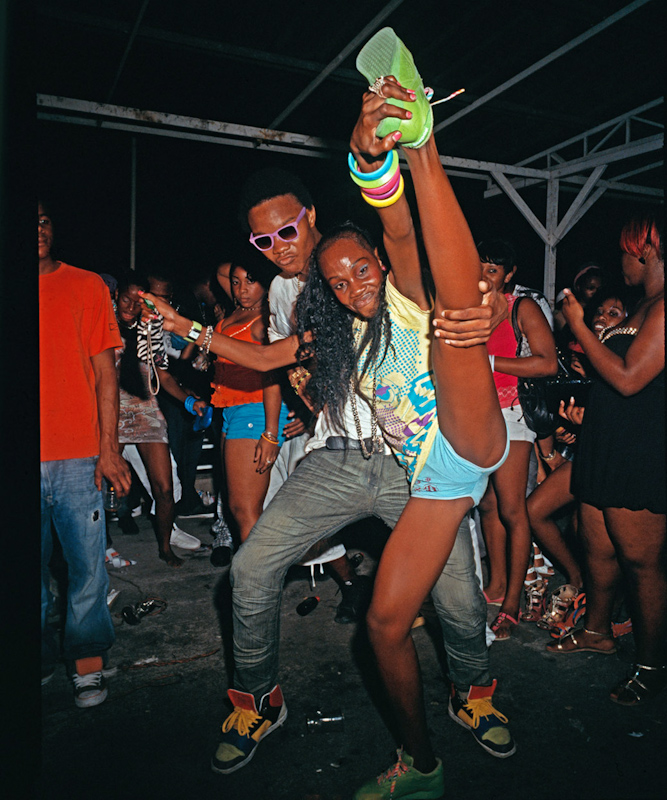 The early 2000s saw the success of newer charting acts such as Rihanna, Elephant Man and Sean Paul. Dancehall made a resurgence within the pop market in the late 2000s, with songs by Konshens, Mr. Vegas, Popcaan, Mavado, Vybz Kartel, Beenie Man among others.
The early 2000s saw the success of newer charting acts such as Rihanna, Elephant Man and Sean Paul. Dancehall made a resurgence within the pop market in the late 2000s, with songs by Konshens, Mr. Vegas, Popcaan, Mavado, Vybz Kartel, Beenie Man among others.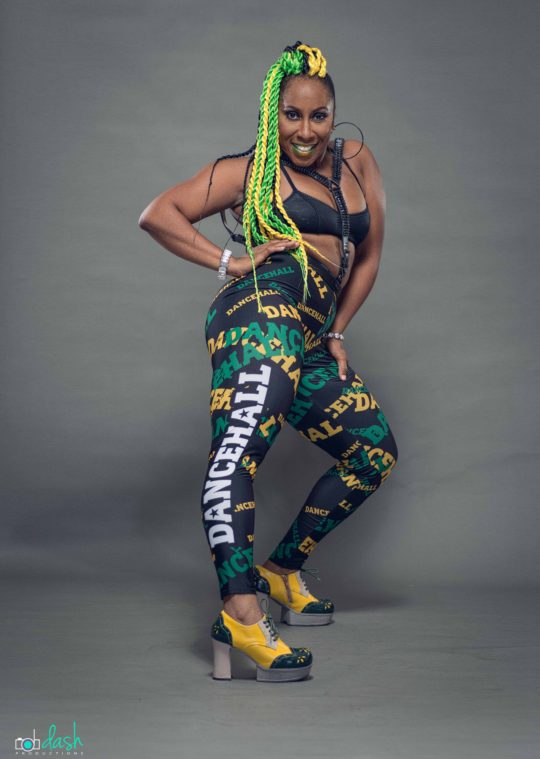 Themes of social injustice, repatriation and the Rastafari movement were overtaken by lyrics about dancing, violence and sexuality
Themes of social injustice, repatriation and the Rastafari movement were overtaken by lyrics about dancing, violence and sexuality Dancehall dance moves are created mainly spontaneously during street parties.
Dancehall dance moves are created mainly spontaneously during street parties.





